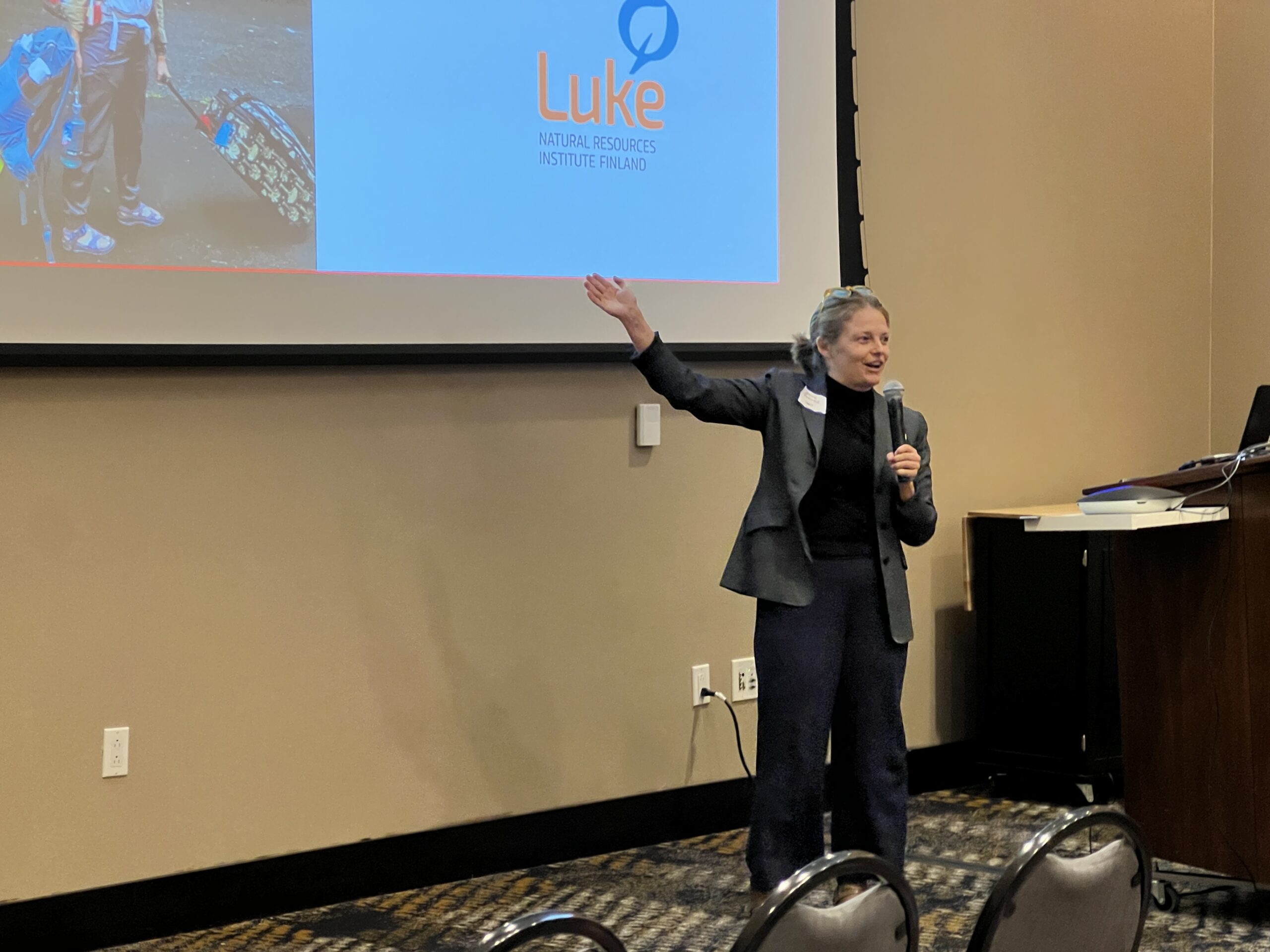The Research Symposium is designed to showcase the breadth and depth of research activities happening on our campus. This annual event connects MSU Denver faculty researchers with each other and with aspiring undergraduate and graduate researchers.
- The goal of the talks and posters is to highlight the research happening at MSU Denver and spark inquiry, curiosity, and discussion.
- Unlike a disciplinary academic conference, expect that your audience will consist of faculty, staff, and students from across disciplines and from diverse backgrounds. Most will be novices in your area.
View an example 7-minute talk presented by Dr. Godwin-Charles Ogbeide, School of Hospitality
7-minute Presentations
- These short talks are designed to share bite-sized concepts that showcase the essence of your research rather than getting into specific details.
- The talks are meant to showcase a breadth of research in rapid succession, with further conversation occurring during the breaks, lunch, and happy hour.
- This general audience will likely be unfamiliar with your discipline and your research area. Be mindful of acronyms and define any technical terms or unfamiliar concepts.
- Practice and stick to the 7-minute limit. To allow all presentations to be heard, presenters will be cut off at the time limit.
- Keep your presentation organized and focused.
- Make sure to introduce yourself and provide context about your research.
- Provide a brief but easily understandable overview of your problem/project/creative work.
- Consider keeping the presentation to 1-2 main ideas, highlighting what you most want the audience to walk away knowing about your project.
- Be sure to explain the impact and significance of your work.
- Include a slide at the end with your contact information.
- Use PowerPoint slides and/or visuals to help the audience understand your work but keep visuals simple and easy to understand.
- If using slides, we suggested a maximum of 7-10 slides.
- Consider providing handouts or a QR code that links to additional details and information.
- We will not have time for questions between the research talks, please use the breaks, lunchtime, and happy hour to discuss with colleagues.
- Remember, you can never cover all the fascinating aspects of your research in just 7 minutes! Use this talk to highlight key aspects to a general audience.
Additional Resources
Lightning talks: science in 5 minutes or less
6 Tips For Giving a Fabulous Academic Presentation
Posters
- The poster session is designed to interact with colleagues and discuss projects that are at all stages of the research process.
- Be prepared to discuss your poster with attendees. Have an elevator pitch ready that quickly shares the research idea/problem and why it is important.
- Think of your poster as a conversation starter. Encourage questions and consider having some questions ready to ask those who visit your poster.
- Use this time to further your study and gather feedback, think about what you want to discuss with others about your research.
- Keep the information and material manageable.
- Include a brief but easily understandable overview of your problem/project/creative work.
- Include your contact information on the poster for further discussion.
- Consider providing handouts or a QR code that links to additional details and information.
Additional Resources
Advice for Designing Conference Posters – with templates
Inclusivity and Accessibility Considerations
- Be intentional about addressing a diverse audience with visible and invisible identities that may include all abilities, ethnicities, genders, geographies, nations, races, sexualities, and socio-economic statuses.
- Inclusive language is constantly evolving and context dependent. There may be reasons that you use language that would otherwise be ill-advised. If this is the case, be transparent and provide context for your terminology.
- Make sure that statistics, demographic data or trends presented are diverse-conscious. This means being transparent about who is and who is not included as well as the potential implications of that.
- Use visuals to support your ideas but keep images simple and easy to understand and follow principles listed below about making your materials accessible.
- When presenting, describe slides and graphics briefly. For example: “This graph illustrates these key points…”
- Even if you have a loud teacher voice, use the microphone for those who might have trouble hearing you.
- For presentations that include video, ensure the video has been captioned and display the captions.
- Offer to describe your poster or bring a file with your poster in text or descriptive PowerPoint format for attendees who experience blindness or low vision.
Additional Resources
MSU Denver CTLD guide to Making Presentations Accessible
MSU Denver CTLD guide to Making Documents Accessible
Inclusivity and Accessibility Recommendations for Presenters
Guidelines for Creating Accessible Printed Posters

